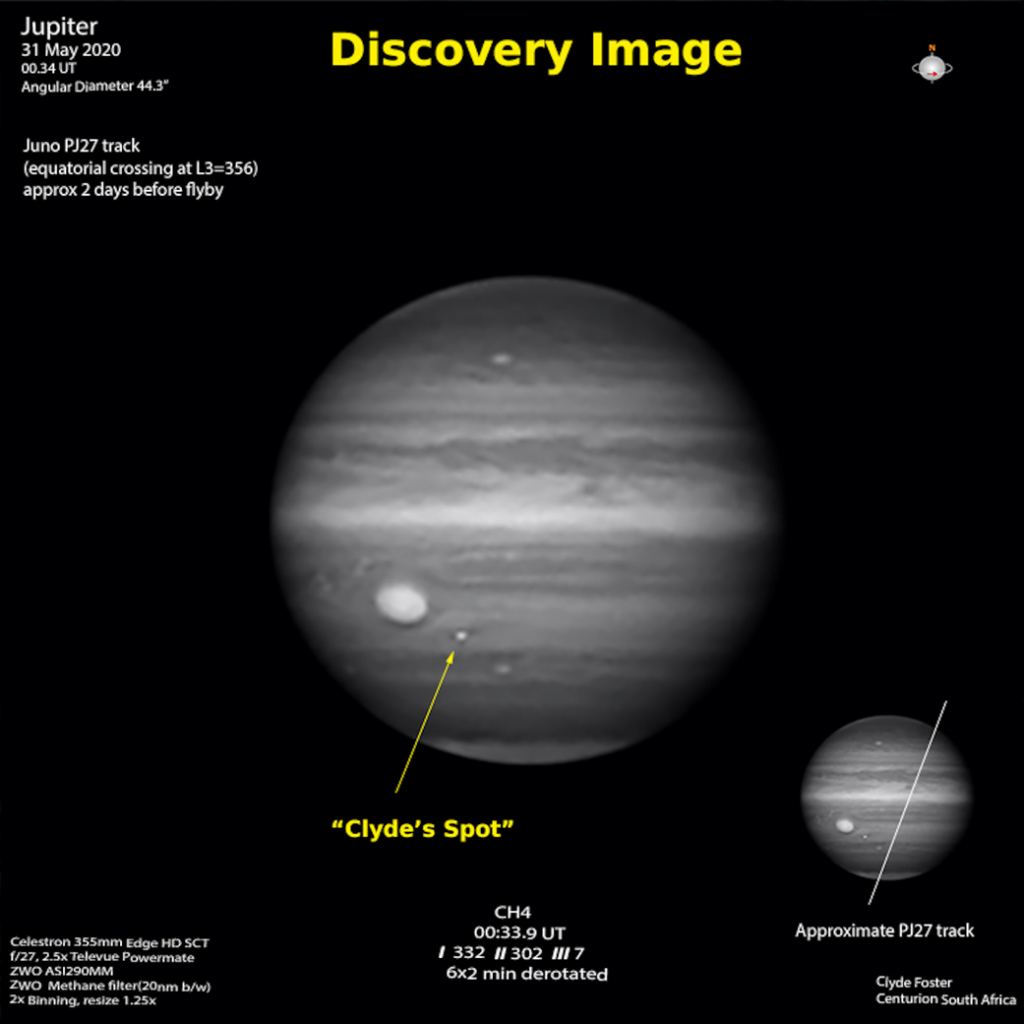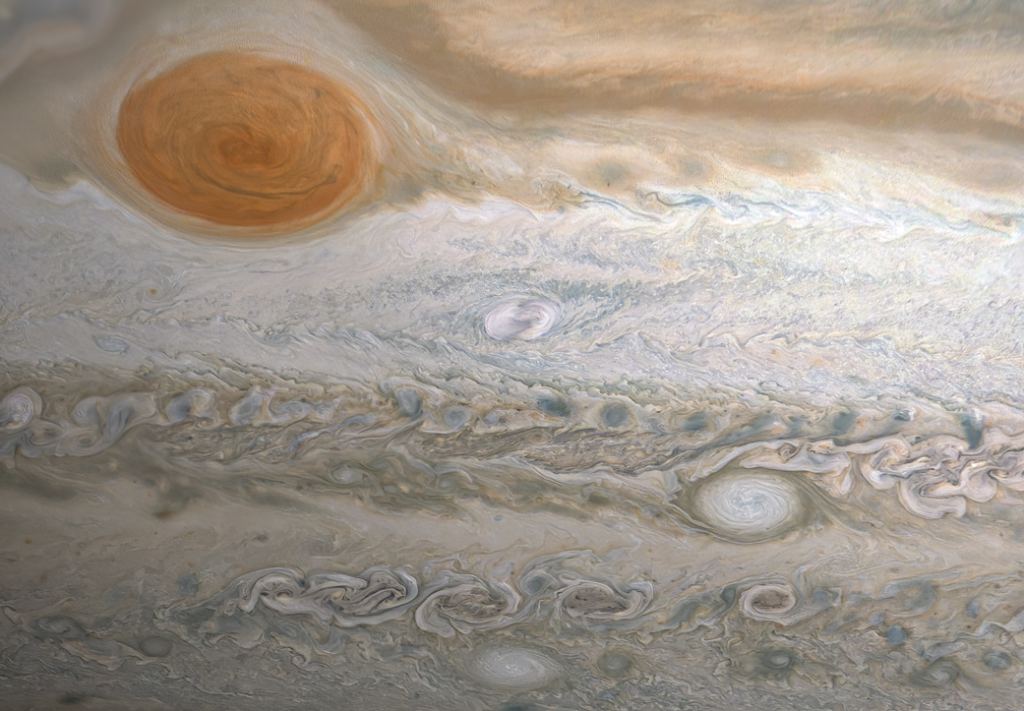There’s a new storm brewing on Jupiter. The most famous storm on Jupiter is the Great Red Spot, which has been active since at least the time of Galileo. Most of Jupiter’s storms don’t last for hundreds of years. They grow and fade just as they do on Earth. This latest storm was discovered by amateur astronomer Clyde Foster.

Foster observed the storm when he was observing Jupiter using a special filter on his telescope. The filter is sensitive to a wavelength of light that methane strongly absorbs, which allows the features of Jupiter to stand out. Storms such as the Great Red Spot are low in methane, so they appear bright in Foster’s image. The image also shows a small bright spot below and right of the Great Red Spot, which doesn’t appear in earlier images. In honor of Foster, it has been named “Clyde’s Spot.”
This area of Jupiter is regularly observed by the Juno spacecraft, and Juno’s raw images are available to the public on the Juno mission website. citizen scientist Kevin M. Gill downloaded raw images of the area and processed them to create the high-resolution color image you see below.

This is an excellent example of how professional scientists and the public can work together to make new scientific discoveries. Finding smaller storms such as this one is important because we still don’t fully understand how Jovian storms form. On Earth, a thin atmosphere is heated by the land and sea, which provides the energy necessary to create and maintain storms. Jupiter has no solid surface. Instead, Jupiter’s atmosphere gets warmer and denser with each deeper layer.
There is currently no definitive theory on how Jupiter’s storms are created, but discoveries like this one may someday lead to an answer.
Reference: “Clyde’s Spot on Jupiter.” NASA image feature.

